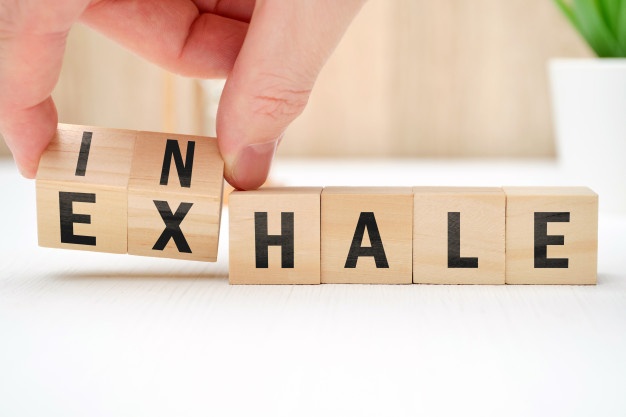Pressures, to-do lists, fears and anxieties, and general discomforts have an annoying way of showing up in our lives right when its time for bed. Thankfully, there are plenty of holistic remedies that can help counteract racing thoughts that just get faster when the lights go out. When relaxation is your end goal, breath becomes your most important ally. Simply taking deeper, more controlled breaths can be enough to lower your cortisol levels, since breathing into the diaphragm can stimulate the vagus nerve, which kick starts your body’s parasympathetic response.

This is known as the relaxation response, and its been studied pretty extensively. One study in the Journal of Alternative and Complementary Medicine found that older people with chronically high blood pressure were able to lower their SBP by an average of 9.4 points over eight weeks using mind-body relaxation techniques that employed the breath. Another in Psychoneuroendocrinology found that just 25 minutes of mindful meditation over a three-day span regulated participants’ cortisol response and reduced self-reported psychological stress.
Here’s an introduction to five meditation exercises that can help you use the power of the breath to relax and fall asleep more easily.
Use a guided meditation app.
If you’re new to the mindful meditation arena, phone apps like Headspace, Calm, and Insight can be really valuable since they have someone on the other end reminding you to come back to your breath every so often.

Many of them also come with meditations specifically designed to combat stress and evoke relaxation. You can do the quicker; five-minute exercises in a pinch when you feel your stress response triggered, or make a habit of listening to a longer one to unwind for bed.
Designate a bedtime mantra.
If you’re a more experienced meditator, challenge yourself to ditch the app and craft a personal de-stress mantra instead. Let your intuition guide you to a phrase that brings you peace, such as “I am in control of my life” or “I do not let outside triggers affect my inner peace.

Whatever your mantra may be, repeat it with each inhale, letting it regulate the breath and mask the lingering worries that may creep in during your wind-down practice.
Make your exhales longer than your inhales.
Breath work involves tweaking your breathing to achieve even more therapeutic effects. There are hundreds of different techniques and routines for doing so.

An example is taking a long, deep breath through the nose and exhaling out of the nose for two to three counts longer than you inhaled. Doing so should help you begin to unwind within 60 seconds or less. “The slower you breathe the quieter the mind will become.
Try a 2:1:4:1 breath ratio.
Robin Berzin, M.D., a functional medicine physician and founder of Parsley Health, recommends inhaling for a count of two, holding the breath for a count of one, exhaling gently for a count of four, and finishing by holding the breath again for a count of one. If the two-to-four count feels too short, she says to increase the length of the breath to four in and six out, or six in and eight out, etc.

But if longer breaths create any anxiety, there is no need to push yourself,” she reminds us. At the end of the day, it’s all about what pattern makes you feel the most comfortable and at ease, so play around with different combinations of inhales and exhales until you find your sweet spot.
Add in some visualization.
Adding visualization to your breath work practice is another powerful way to combat stress and unease. Yep, simply imagining that you’re more relaxed could ultimately help your body calm down. Hypnotherapist Grace Smith often calls upon visualization when working with clients. She encourages them to imagine that stress is a physical being and politely asking it to leave your life to make way for more flow. Then, she says to see in full detail what you want to replace it with. So, if you’re looking to boost creativity, for instance, imagine a fountain:

Visualized a beautiful ocean or stream or a faucet turning on, one that continues to flow and flow and flow with ideas. All you need to do is fill up your pail, carry it back to desk or studio, and see where these new ideas lead you. Imagine both accessing new ideas as well as following through with their execution easily and effortlessly, all the while being kind to yourself.
Like most things, these techniques take practice, so don’t expect to feel like a pro right away. Start by carving out a few minutes every day to practice; think of it as building up your relaxation arsenal so you’ll be better equipped to handle a stressful situation the next time it arises. No. 1 rule: Be kind to yourself, and thank yourself for every effort.
